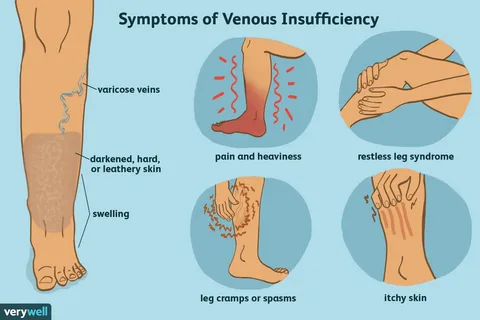Causes, Symptoms, and Treatments of Venous Reflux

Venous reflux, also known as venous insufficiency, is a condition that affects the proper functioning of veins in the legs. It occurs when the valves in the veins fail to close properly, leading to the backward flow of blood. This condition can cause discomfort and lead to more serious health issues if it is not treated promptly.
What causes venous reflux?
The primary cause of venous reflux is the weakening or damage of the valves in the veins. These valves are responsible for ensuring blood flows in one direction—back to the heart. When they fail, blood can pool in the legs, causing pressure and swelling.
Factors that increase the risk of developing venous reflux include:
- Age: The risk increases as we age, as vein walls and valves may weaken over time.
- Family History: Genetics can play a significant role in the likelihood of developing venous issues.
- Prolonged Standing or Sitting: Occupations or lifestyles that involve long periods of standing or sitting can contribute to vein problems.
- Obesity: Excess weight adds pressure to the veins, increasing the risk of reflux.
- Pregnancy: Hormonal changes and increased blood volume during pregnancy can impact vein function.
Symptoms of Venous Reflux
The symptoms of venous reflux can vary in severity and may include:
- Swelling in the legs or ankles
- Aching, heaviness, or cramping in the legs
- Itching or burning sensations in the legs
- Visible varicose or spider veins
- Skin changes, such as discoloration or thickening
Diagnosis and treatment
The diagnosis of venous reflux typically involves a physical examination and imaging tests, such as a duplex ultrasound, to assess blood flow and valve function in the veins.
Treatment Options
- Lifestyle Changes
- Simple adjustments like exercising regularly, elevating the legs, and wearing compression stockings can help manage symptoms and improve blood flow.
- Medications
- Medications may be prescribed to alleviate symptoms or address underlying issues, such as inflammation.
- Minimally Invasive Procedures
- Treatments like sclerotherapy, endovenous laser therapy (EVLT), or radiofrequency ablation are used to close or remove problematic veins, improving blood flow and reducing symptoms.
- Surgery
- In severe cases, surgical intervention may be necessary to remove or repair damaged veins.
Seeking treatment in Singapore
Singapore offers a range of advanced treatment options for venous reflux, provided by highly qualified specialists. Patients can expect state-of-the-art care and personalized treatment plans to address their specific needs.
Conclusion
Venous reflux is a common condition that can significantly impact quality of life if left untreated. Understanding the symptoms and seeking appropriate medical care can help manage the condition effectively, ensuring better vascular health and comfort.





